This week’s Other People’s Bookshelves comes from one of our readers, Mique Menheere, living in the Netherlands.
Q - Hello, Mique. Can you please tell us about yourself and your publication on Instagram?
A - My love for books and reading started at an early age, without having parents who stimulated that activity. My interest in food developed due to my father’s career, he travelled around the world working in the off shore industry. Side effect was he got used to fancy and international food. When home, at the weekends he cooked Indonesian food for us, during the week my mother experimented with new recipes or ingredients. Young as I was, I loved it... During the summer holidays, we often went to France, and I remember trying all kinds of cheeses as a dessert. Ice-cream wasn’t my thing.
Years later, when I was a student, I liked trying new things when cooking, I bought my first cookbooks to do so. After graduating, I found my first real job, and I started traveling and exploring the world myself. My first trip was to Egypt. Besides the magnificent deserts and impressive pyramids, I fell in love with the herb coriander, which was used in falafel. Since then, you can wake me at night for a coriander tasting 😊.
Years later, I discovered the food of India and Vietnam during my travels and fell in love instantly, with the fantastic vegetarian meals. Once home again, I sought and found cookbooks about those kitchens and started cooking that way. Unfortunately, I have never found the recipe for the best vegetarian meal I have ever eaten, which I encountered somewhere in Rajasthan: a combination of rice, egg, apple, nuts and lots of herbs.
Nowadays, cookbooks to me are mainly a source for inspiration and information, when read, I look for new knowledge, new ingredients, new cooking methods… When cooking, I hardly use recipes anymore. But I love the search for recipes of a certain dish in several of my cookbooks, and then compare those and do my own thing in the end anyway…
Over the years, the features and quality of the appearance of the book itself has become important to me. I am more critical now when buying new books. My preference goes to books with a firm soft cover, with bright colors, contemporary design & images, and bound instead of glued. I am not very fond of cookbooks made by a publishers crew, that are not tested.
Some years ago I realized my cookbook stack had reached quite a size, nowadays it’s 346 to be exact. I also realized I would love to get inspired by other cookbook collectors about their collection. I couldn’t find those people however. So I decided to put things around and I decided to inspire others myself, by sharing photos and information about my collection. Instagram seemed to be the perfect tool for me, because of the visual approach it uses in communicating. The rest is history, I started my Instagram account happycookbookreader in 2019.
Q - Please tell us about your bookshelves and cookbook collection, what does it consist of and how many do you have?
A - Initially, I was mainly interested in cookbooks from different cultures. I wanted to learn about, to me unknown, cooking styles and ingredients. So I purchased cookbooks about several European kitchens, like Belgium, Bulgaria, Cyprus, France, Germany, Greece, Italy (of course!), the Netherlands, Poland, Romania, Spain and Swiss.
I also purchased cookbooks about Middle Eastern cooking, like Ethiopia by Johanis Gebreysus, Jeruzalem by Ottolenghi (Israel) , TLV Vegan by Jigal Krant (Israel), Noomi by Sara Shawkat (Iraq), Palestine. I also have cookbooks about the Asian kitchen, like Parwana (Afghanistan), Bengals, Vegan Chinese Food by Yang Liu, Pure India by Meera Sodha, Indonesia, Korea, Thailand and Vietnamese vegetarian by Liam Luu. Furthermore, I have cookbooks about Australia, Mexican, Surinam, UK (Great Britain), and USA cooking (The hot Chicken project by Aaron Turner) .
Over the years, I got more interested in cookbooks and in cookbooks with a certain theme. Like books on 1 certain lifestyle (Solo, Emma de Thouars) or books on 1 ingredient, like Jackfruit, or halloumi cheese (the Halloumi cookbook, Heather Thomas) or Tahin (The magic of Tahini, Dunja Gulin). Or books on liquids; like wine, beer, Verjuice and vinegar , eg. (the Vinegar cupboard, Angela Clutton). The more specialized the book, the more I like it, that’s to say, if there is also a fresh design in it. At the moment my collection counts 346 cookbooks, the most of it are (like new) second hand cookbooks.
Q - Which cookbooks do you love and use the most and why? Do any of them have a sentimental value?
A - I have a long history with Vegetarian recipes of the world by Madhur Jaffrey, because it offers vegetarian recipes from countries all over the world. When coming home from travels, I am still very “into that country” and want to cook meals from that kitchen. This cookbook often has suitable recipes.
During my travels in India I discovered dishes with paneer, a fresh cheese which seems a bit like ricotta. Therefore, I am very, very happy I accidentally found the cookbook Exotic cooking with Paneer, by Nita Metha, at a recycle shop. I am a big fan of the dish Paneer Djal Frezi, a combination of paneer with tomatoes, onions and bell peppers. When eating out at an Indian restaurant, I am always drawn to meals with paneer, especially when I see an unfamiliar use of it.
The Eggplant Cookbook by Rosemary Moon (1998) is another book I used a lot in my thirties. I am fond of eggplant, just love the firm feeling outside and the way it absorbs flavors! A successful dish I made for years when having guests, is Italian cannelloni filled with eggplant & tomato and eggplant & walnuts. I developed this recipe, being inspired by this cookbook. Recently, I got to know that in September of this year, a new cookbook about eggplant will be published by cookbook writer Jigal Krant. Looking forward to it already! It will be interesting to compare the two books, being a journey through time in the use of eggplant.
Sentimental and invaluable to me is my mother’s recipe writing, which she made around 1964 when she was 21, on thrown-away-paper from her work at the county. In those days the Netherlands were still recovering from World War II and there wasn’t much wealth yet for the working class. My mother had the back luck to die at 45, this is one of the few things I got from her. When my house would burn down, I would quickly grab my cat, her recipe writing and run…
Q - Are there any rare or special editions in your collection?
A - Not in the sense of economic value. But I do have a cookbook, which is a product of a remarkable part of history. It comes from the isolated Pitcairn Island, which is located in the South Pacific Ocean: Betty Christian’s cookbook. It’s written by Betty Christian, a descendant of Fletcher Christian, from the Pitcairn Island Weckle with the HMS bounty in 1790. The boat crashed on the shore of Pitcairn Island, and the people in it, a mix of British men and “stolen” Polynesian women, started a life there. Nowadays there are still 40 inhabitants on the island. Aligning with history, the recipes are mostly British, combined with exotic ingredients like yam and arrowroot.
It took 3 months to get this book from Pitcairn to my house, because I bought it online from the only shop on Pitcairn. The boat from Pitcairn Island goes only a few times a year. An exercise in patience for someone from the Western world!
Q - Can you remember your first cookbook? What was it and do you still have it with you?
A – Yes I can! Now and then I read it again just out of feelings of nostalgia. When I was a student I bought it in 1990 at the famous Dutch warehouse Vroom & Dreesman for a few euro’s: Stoofschotels en andere Indiase gerechten (originally published as The book of Curries & Indian Foods published in 1989), by Linda Fraser. My favorite recipe is Filled tomatoes (with paneer and Gouda cheese), served with rice. Nowadays, I have more knowledge about the Indian kitchen and realise that recipe is not authentic, but a mix of western and Indian recipe making. Nevertheless me and my friends enjoyed eating this dish many times!
Q - What system do you use to organise or file your books?
A - In the old days I had no system at all in my book shelves. When years passed by and I got more books, I have tried different methods for getting structure in my stack.
During Covid it was a nice distraction to be busy with my bookshelves. First I arranged them in alphabetical order by title. Later by color (it was really nicely looking but couldn’t find anything anymore). Nowadays it’s a mixture of methods, which works the best for me. The first shelves are filled with books arranged by country or continent. The rest of the shelves are filled with books arranged by theme (in alphabetical order): flavours (e.g. sour, bitter, sweet), liquids in alphabetical order (like coca cola, coffee, hot sauces, margaritas, Sriracha cookbook, tea), vegetables (jackfruit, cauliflower, eggplant, greens), vegetarian and vegan.
In my labtop I have a document which is an index for my most favorite recipes from each cookbook. The index is arranged by different categories, also in alphabetical order: like author, country/continent, design, ingredient, vegetarian/vegan, publisher. Every time I get a new book I add my most favorite recipes of that book to the list. I am not always in the mood for that, but it helps me keep track of my collection, which will give me convenience later.
Q - What is your oldest Cookbook and when was it published?
A - My oldest cookbook was a gift from my grandmother, she bought it in 1962 when she was 44, and I got it when she was 84. It’s the WANNEE kookboek, Amsterdamse huishoudschool ( WANNEE cookbook, Amsterdam housekeeping school). I have the 14th print, published between 1950 and 1960. The first edition is from 1910. I remember my grannie cooking from it on Sundays. She didn’t like cooking but seen from today’s perspective, she made lovely pure home-made cooking. Till today, I am so glad with this book, mostly because there’s a lot of her handwriting in it. When she got older her beliefs about how-to-behave changed, making notes on the cover was normal to her then. To me that’s a turning of a phase in her life, it makes the book more special.
It also has beautiful old-fashioned looking drawings of fruit, vegetables and meat / fish, that nowadays aren’t made anymore. Now and then I take this book from the shelve on a Friday evening, and just look at the drawings.
Q - Which cookbooks would you recommend and why?
A - The winner of UK Master Chef 2021 was Alexina Anatole. After winning that contest, she published the cookbook Bitter, full of recipes with a bitter taste palette, with ingredients like tahini, walnuts and liquorice. Not things you use every day maybe, because of that the more interesting the book is to me…
A mix of a reference work and a recipe book is Ottolenghi Test Kitchen : extra good things by Murad and Ottolenghi. I really appreciate the concept of this book: recipes of things that can make your food more tasty, it’s mostly about taste and taste maker’s instead of recipes. Besides that, the book has a nice binding, flexible cover, soft touch and nice colors. Perfect.
A book I hardly cook from but makes me so happy just looking in it, is Paradiso by Dennis Cotter, he owns a restaurant in Cork (UK). He serves high end vegetarian food looking like art. Not something you make at home easily, but very inspiring to make for vegetarian friends and family at very special occasions. Making some of those, you will be the hero of the day.
Tofu, Emma’s amazing Asia (English market: How to fall In love with tofu), by Emma de Thouars is a book I am so glad exists. Emma is a Dutch recipe writer from Amsterdam, with a Dutch / Asian background, like many people in the Netherlands, due to “our” colonial past. Emma’s approach in this book is settling prejudices regarding tofu and make you fall in love with it. She succeeds marvelously, her recipes are simple and tasty, love them so much. Another book with a special chapter about tofu, with interesting info and recipes, is the recently published Vegan Chinese food of Yang Liu. Did you know that you have to freeze and defrost tofu, before using it? It absorbs tastes much better that way.
Q - Do you prefer cookbooks by famous chefs, regional cuisine, or specific themes?
A - Adoring or admiring famous people is not really my thing. As a child, I wasn’t into popstars either 😉. Somehow, I always see the other side behind the glamour. And being famous doesn’t necessarily go together with being creative and innovative. And that’s the stuff I am looking for.
One topic cookbooks.
I am very interested in, in-depth-information, very specialized information, it feels like a treat to my brain. Sometimes I realize that although I work as a Life Coach, I easily could have been a researcher or librarian. Such very different careers, but both such a pleasure….
I especially love to find information about one topic, I am a real sucker for 1 ingredient cookbooks, like Beer & Veg by Mark Dredge, about vegetarian dishes which include beer as an ingredient. The MISO kookboek (originally: Miso tasty - the cookbook) by Bonnie Chung or Pimp my rice by Nisha Katona, with worldly dishes all containing rice... I also like cookbooks that deal with 1 dish or kind of food, e.g. Vegan Fast Food by Brian Watson. So nice to have a cookbook about my guilty pleasures without having to eat fish or meat. Or Laksa, by Rylands Peters, a book with 65 different varieties of this spicy noodle soup (dish), which came into my life during a journey to Malaysia.
Arty cookbooks
And last but not least… as I am quite visually oriented…. I have a soft spot for cookbooks that almost can be called art… due to originality, authenticity and very creative design. Those books stand out to me definitely, they are a treat to my eyes.
Like A sauerkraut’s kitchen by Anni von Bergen. It’s a book in the German language. It has lots of beautiful colorfull drawings. And it contains maps of all regions in Germany, so you can see which area the recipes come from.
Another book with a beautiful contemporary design is Food of the Italian islands by Katie Parla. The cover of the book was already enough for me to buy it, what a beautiful map of Italy it shows! Also a lust for the eye is the Kookboek voor een heerlijk chaotisch leven (translation: Cookbook of a wonderful chaotic life) by Duss & Roothooft. Instead of photo’s or drawings, the illustrations in this book contain collages of handcut felt. I have never seen a book with textile as a way of image building before. And because I make textile art myself, of course this gets me.
Another book in this category is The river café look book. A part of the book is designated for photos only, making an intuitive connection between a certain image and a dish. I wish I would have created this book myself, such a great idea! Love love love it! Here you see an example.
Books I also would like to mention are Tacopedia and La tortilla de patatas. Both books have beautiful hand drawn illustrations. Tacopedia’s cover (by Phaidon) is bright and colorfull, the book’s paper is newspaper-isch and it has lots of non-glossy photo’s, what makes them more “real”. Above that it gives lots of background stories and facts. La tortilla de patatas, by David de jorge and Javirroyo, did I buy on Fuerteventura, a Canary Island. It’s a graphic cookbook comic, the design is a mixture of handwriting, drawings and photo’s. The whole book is about the Spanish dish tortilla de patatas, based on eggs and potatoes and often eaten as a snack in the afternoon.
Last but definitely not least is a limited edition book the Zeeuwse knop bakboek by Tinka Leene. I am born in Zeeland province (translation: land of the sea) on the shore of our North sea. Hundred years ago habitants of Zeeland province wore a certain kind of jewelry on their shirts or belt, called de Zeeuwse knop. Somehow this peace of jewelry got into fashion again, and nowadays it’s used for souvenirs in Zeeland province, e.g. like affordable jewelry of a Zeeuwse knop or this baking cookbook, which gives you the recipe to make a cake in the form of a Zeeuwse knop.
See the photo below.
Reference culinary books
Normally, culinary reference works are not my first choice when buying a cookbook, they contain lots of texts and often lack visual content. But some of them are just so interesting, like De groene smaakbijbel (the Flavour thesaurus: more flavours) by Niki Segnit and Flour, a comprehensive guide by christine mcfadden. So much knowledge is put together in these books, it must have been quite a job to collect all the information needed to write those. Hats off to Niki and Christine!
Q - Which cookbook authors have you met or would you like to meet? Tell us about them.
A – Many years ago, in the biggest bookstore of Utrecht city, there was a gathering with Donna Hay. During that event, I suddenly realized that it’s hard work, to promote one’s cookbook... Having to visit all those shops, having to travel a lot, getting the same questions over and over again… I realized that part of being a cookbook author would not be my cup of tea... Although I love tea by the way.
Recently, I met Angela Clutton in her online Bookshelf Cookbook Club. She was very kind and a to-the-point online facilitator and made it work for us all. I am so glad that nowadays we can have interactions with like-minded people from all over the world. As long as the time zone doesn’t interfere, by the way..
Q - Is there anything else you would like to add about your bookshelves and book collection that I haven’t asked?
I have started to make a cookbook filled with recipes from dishes I ate in different phases of my life. It’s gonna be a combination of photos of important places to me and the dishes I loved eating. I have started collecting recipes & photos and designed a format also, so the first step is taken!
Thank you so much to Mique for sharing your bookshelves and cookbooks with us.
Follow Mique Menheere on Instagram ‘HappyCookbookReader’
Read more of Other People’s Bookshelves Q&A with …
Other Links;
Main Library | Recipes | Kitchen Tips | FSL Index | Q&A: Other People’s Kitchens | Q&A Other People’s Bookshelves | FoodStak Reads | Recommendations


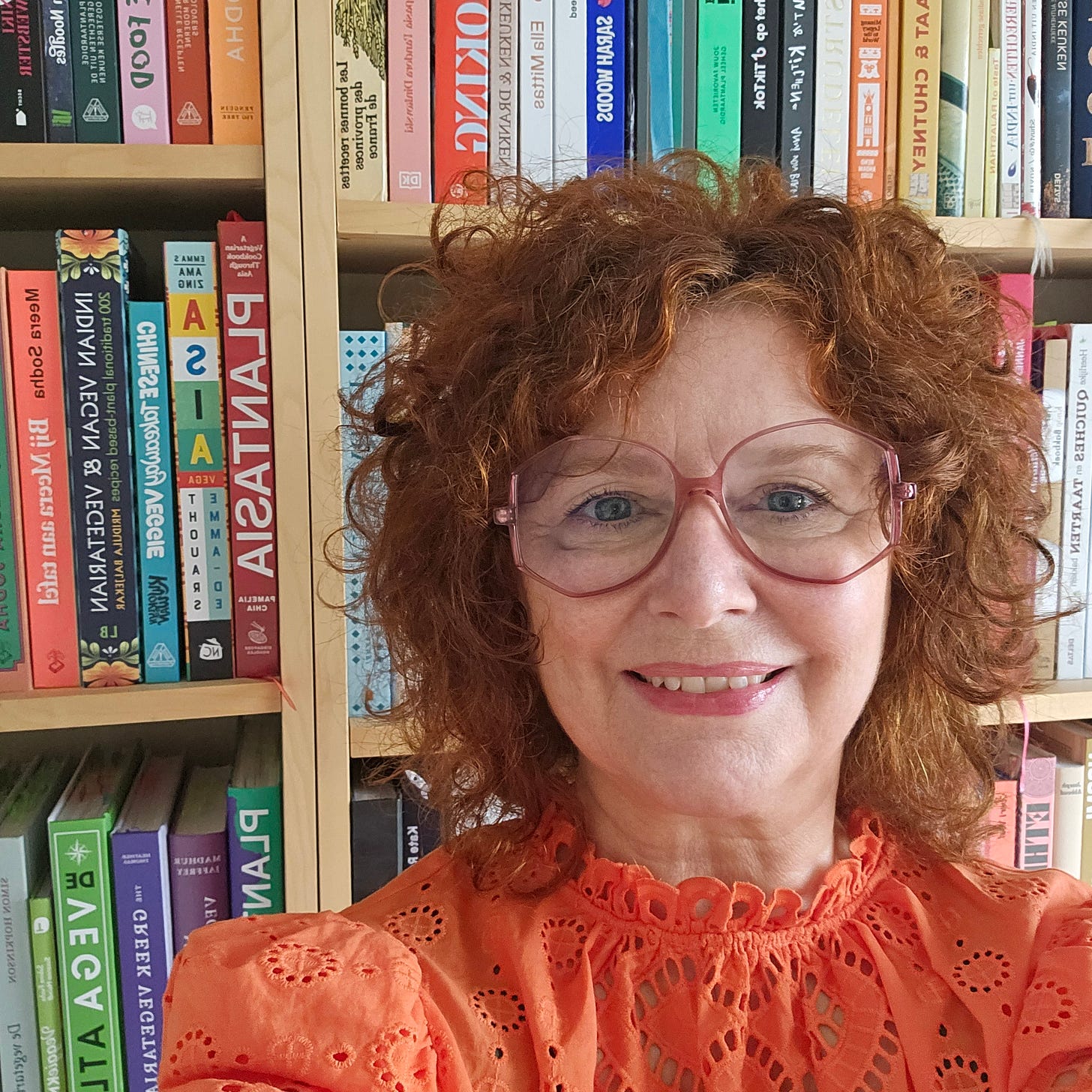
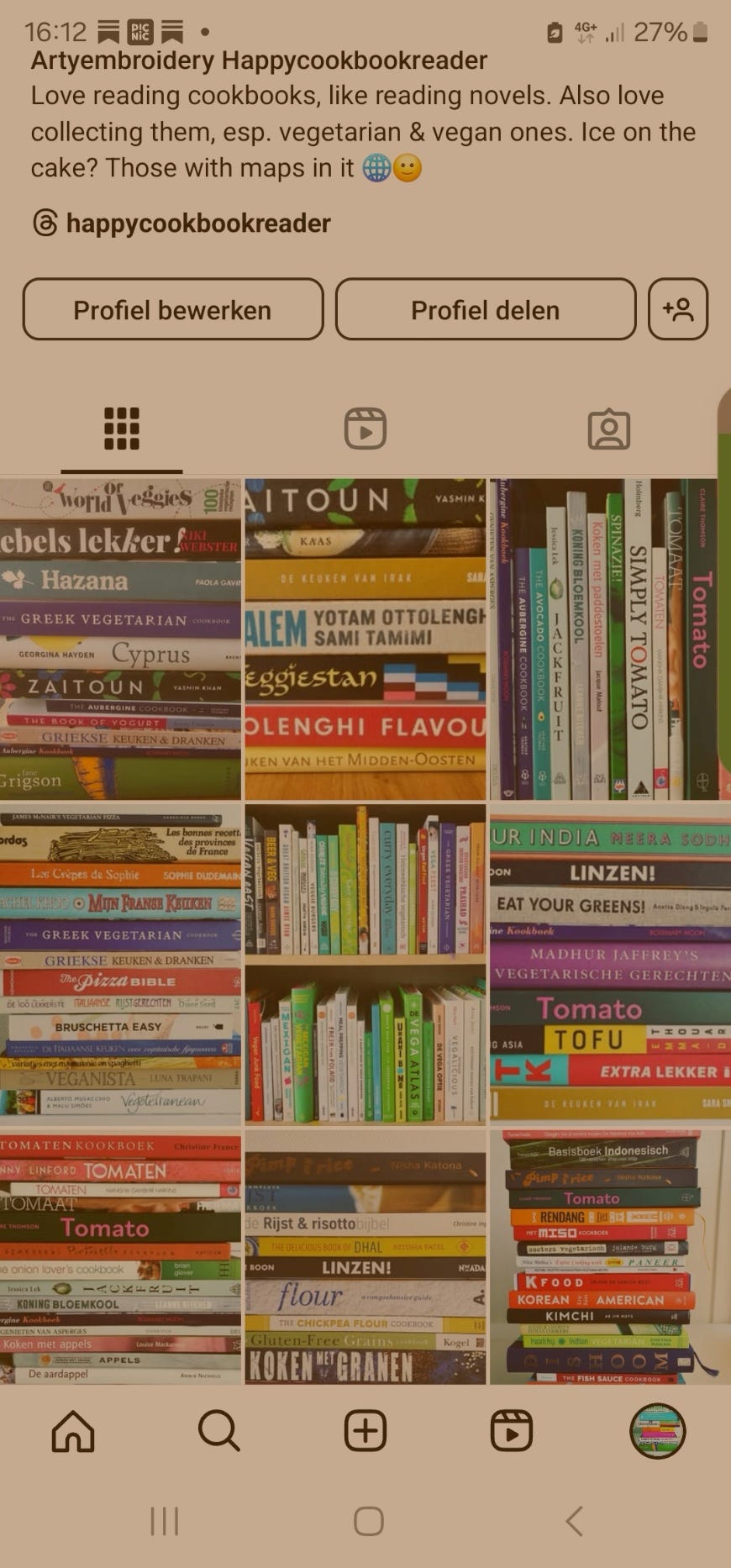
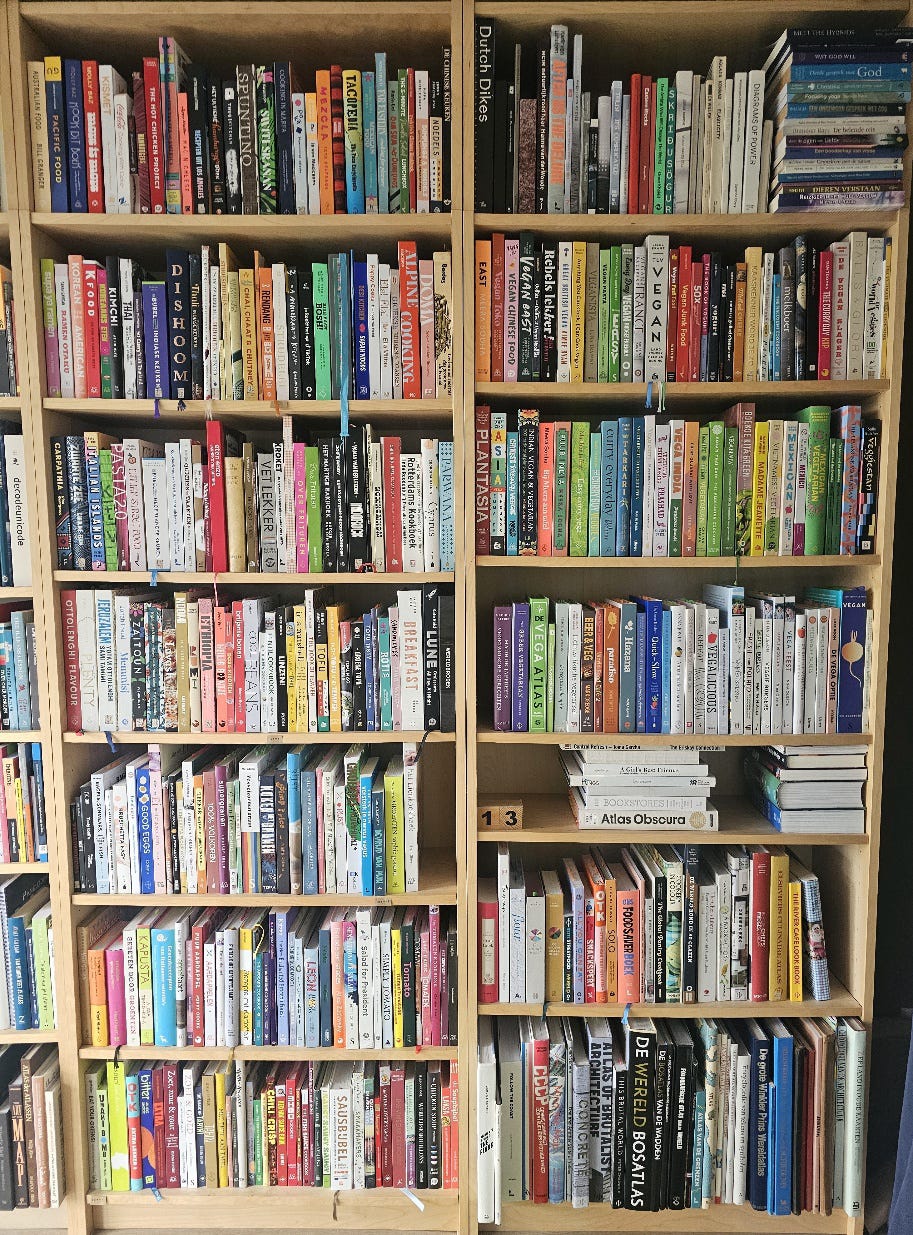
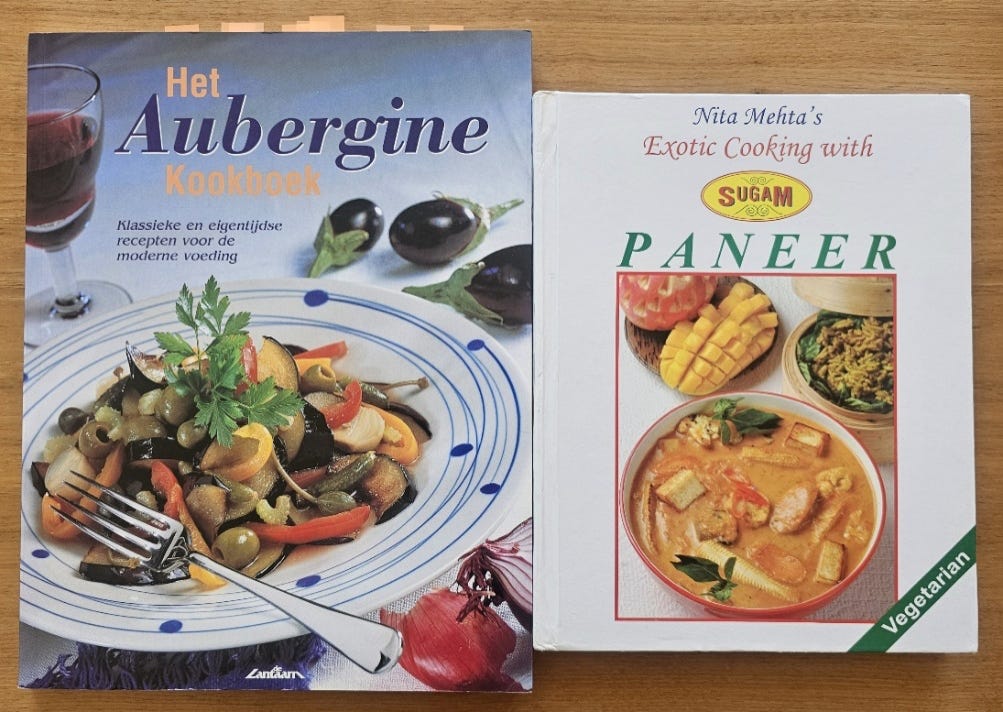
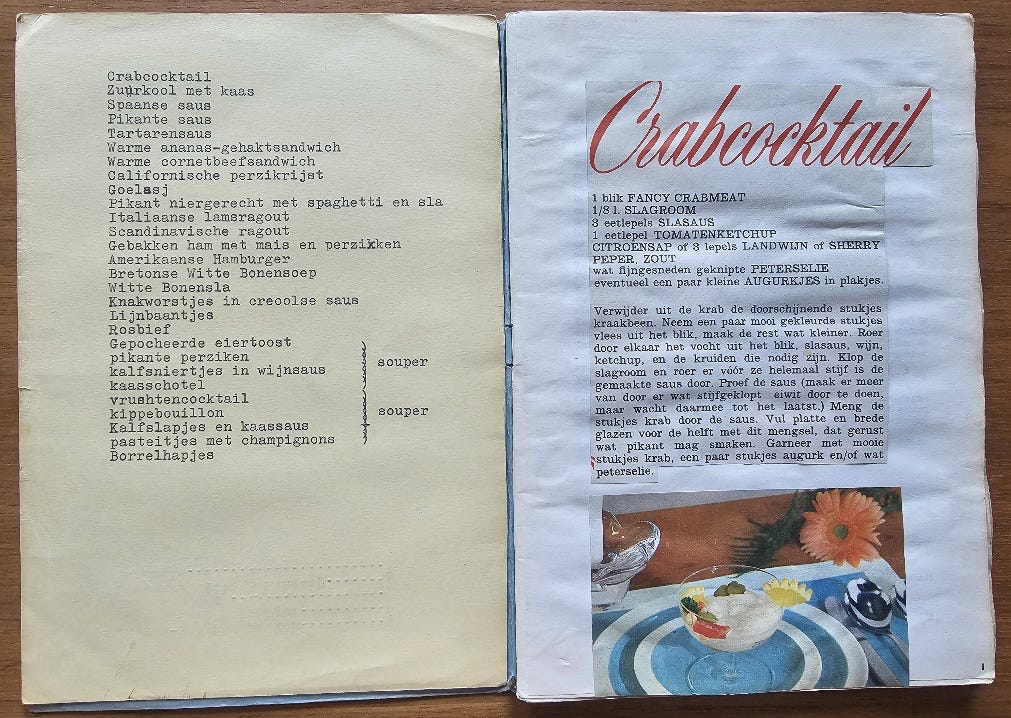
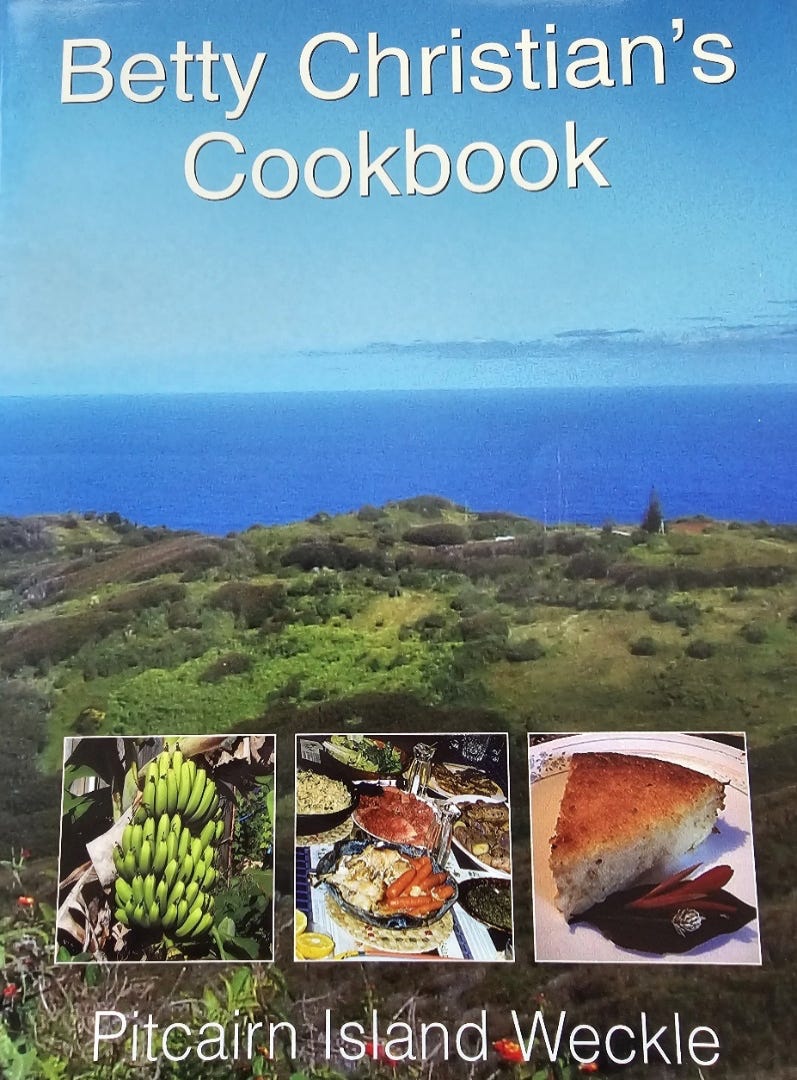

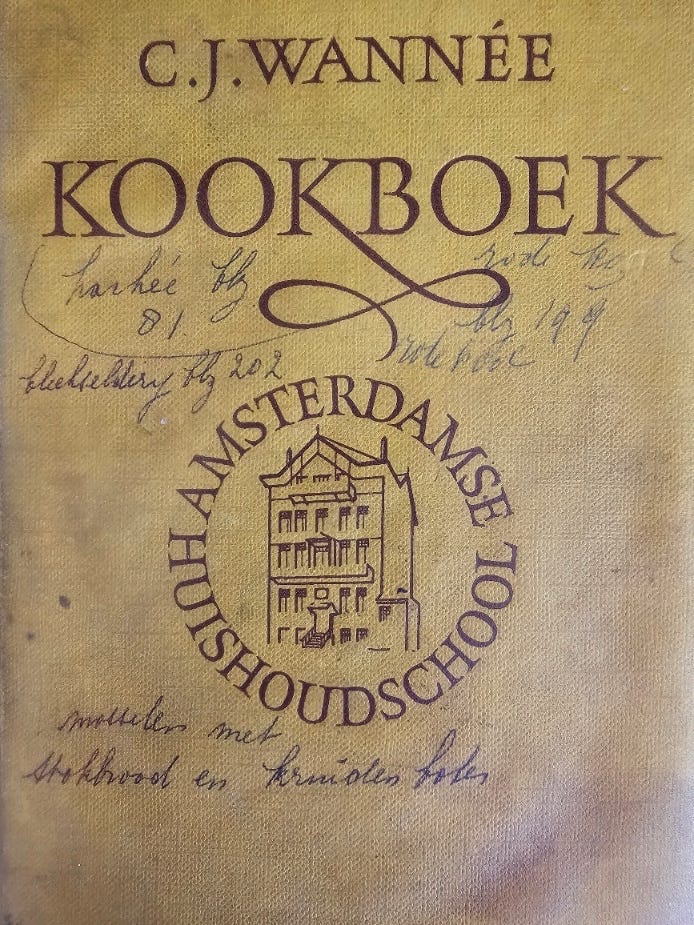
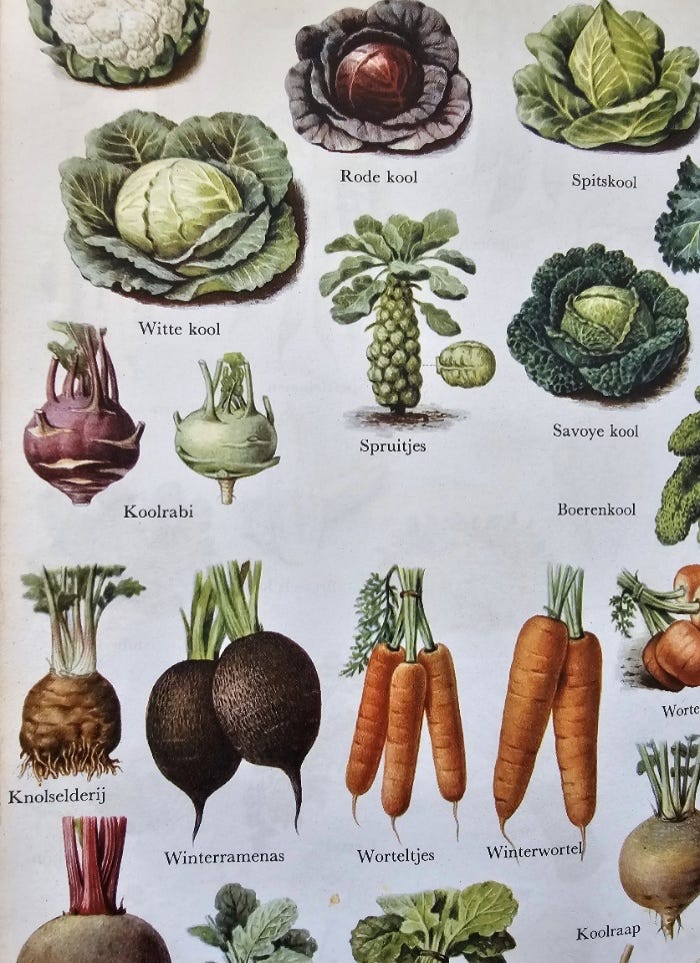
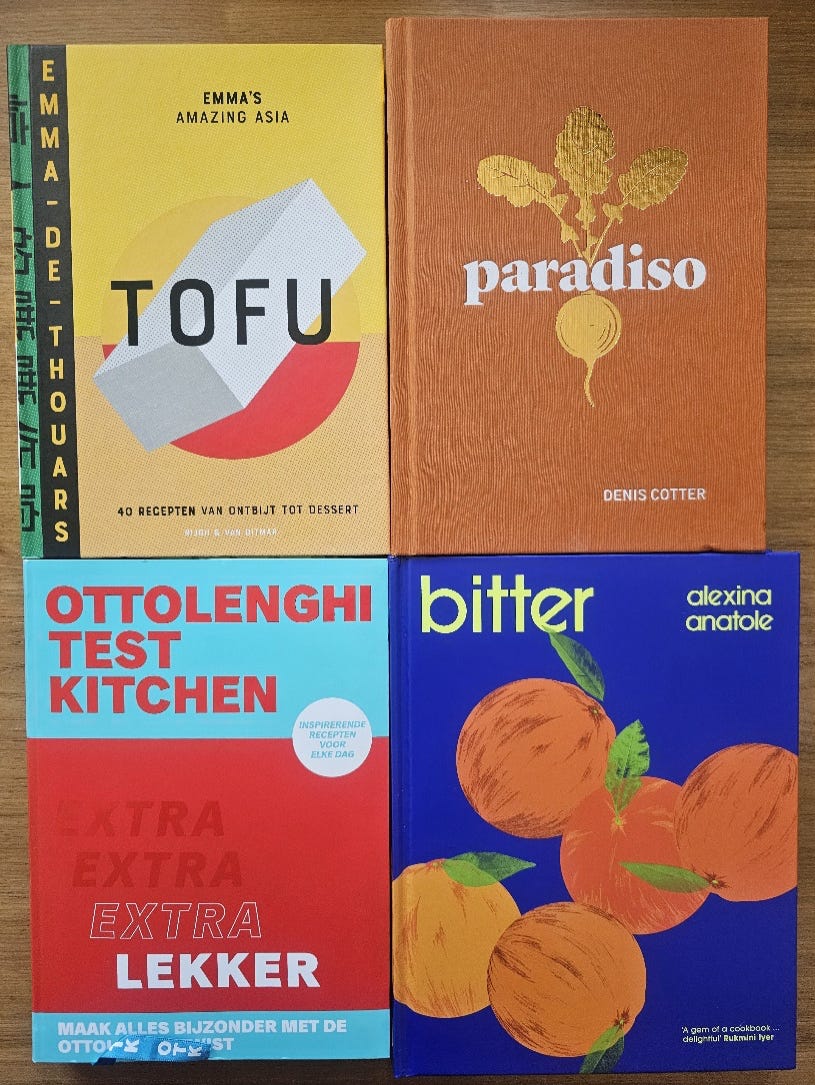
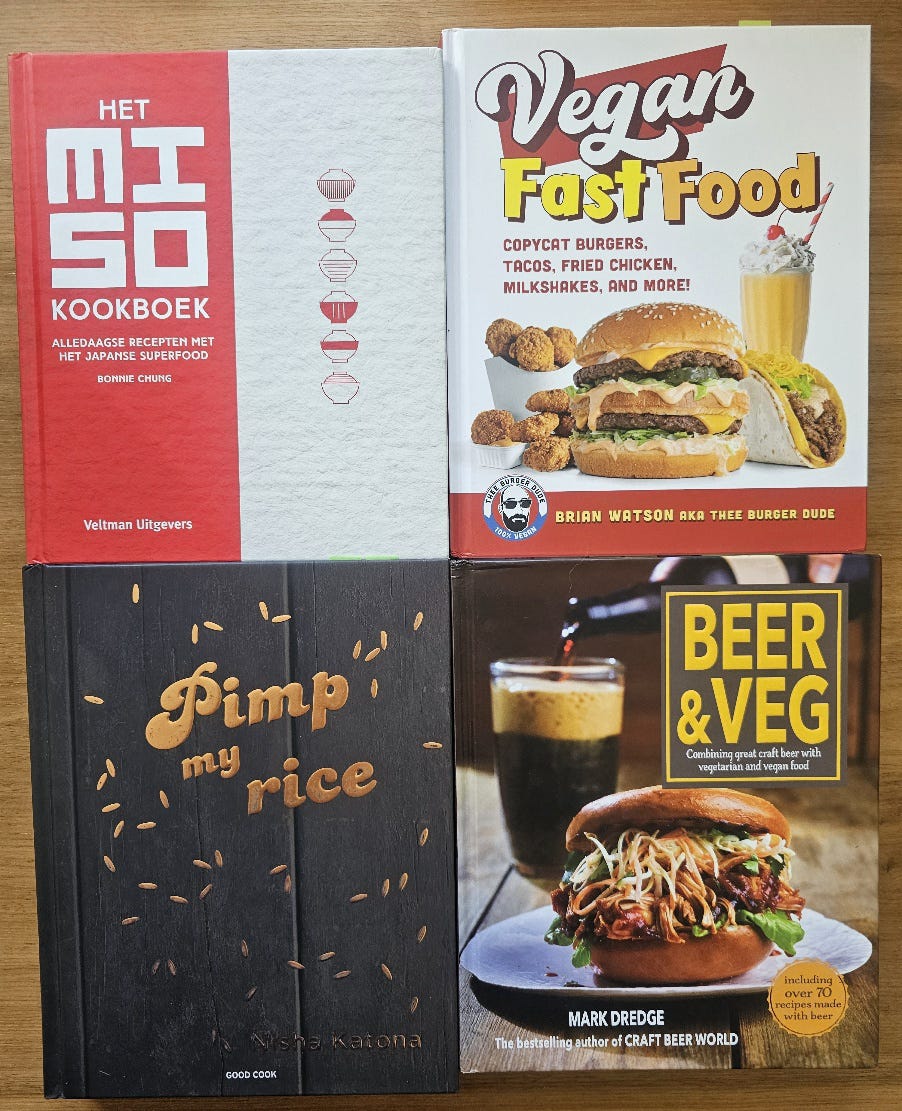
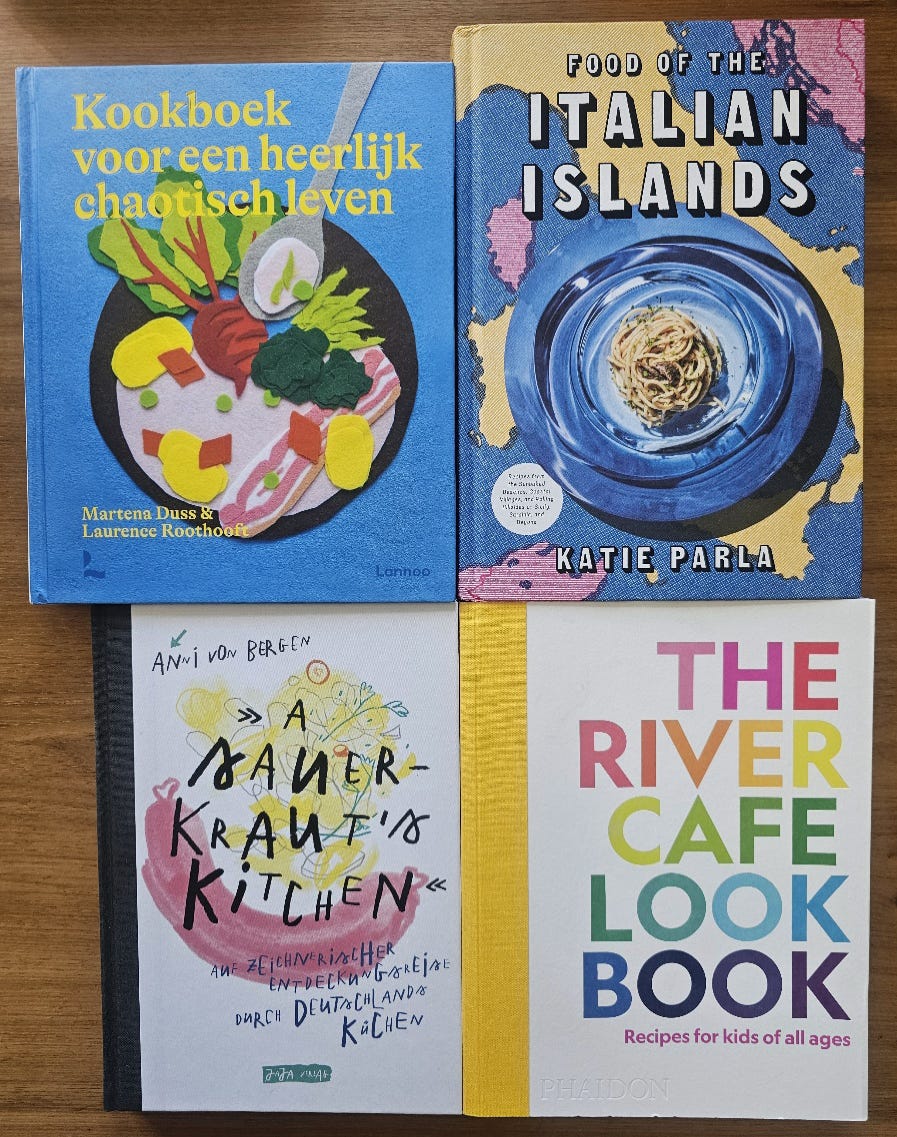
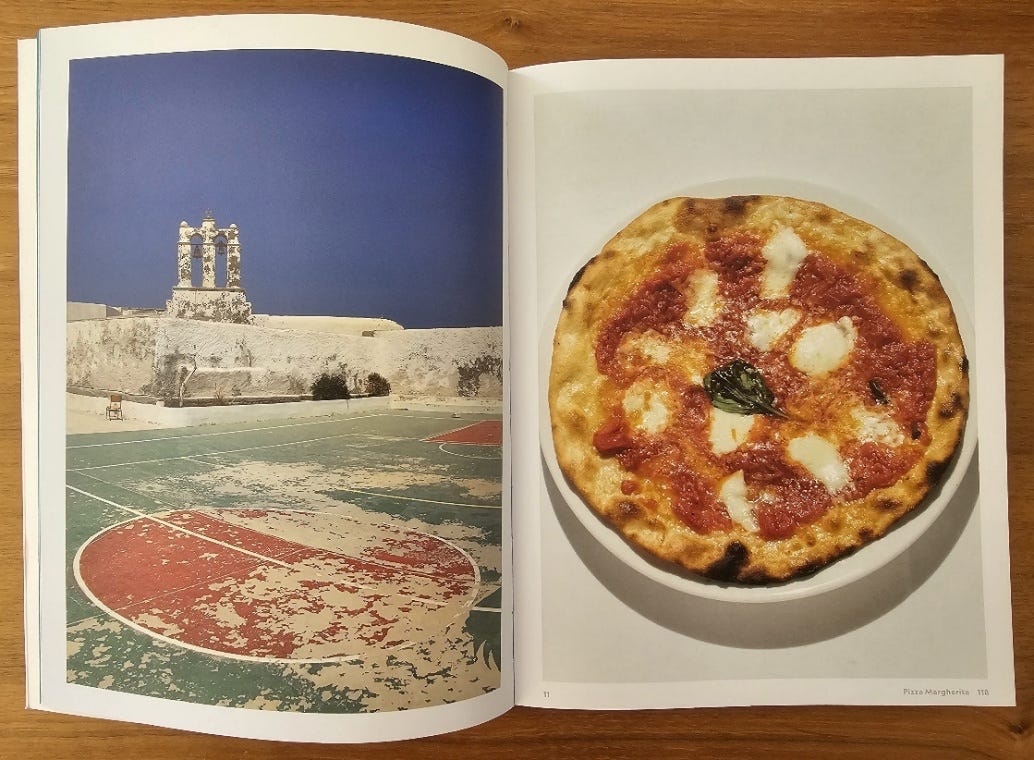
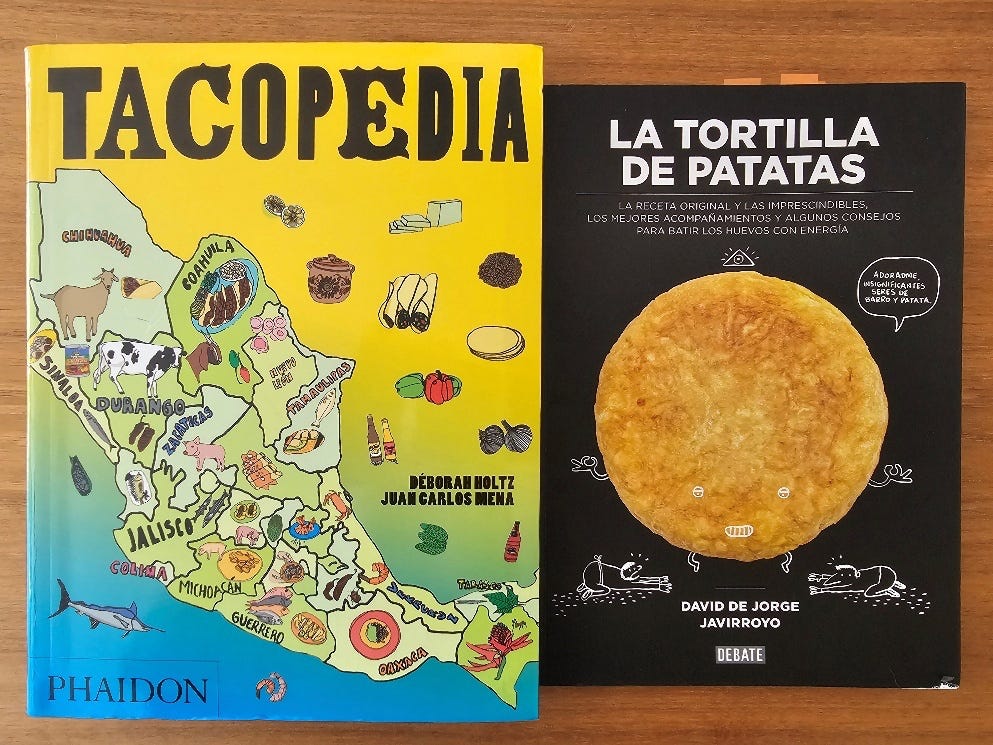
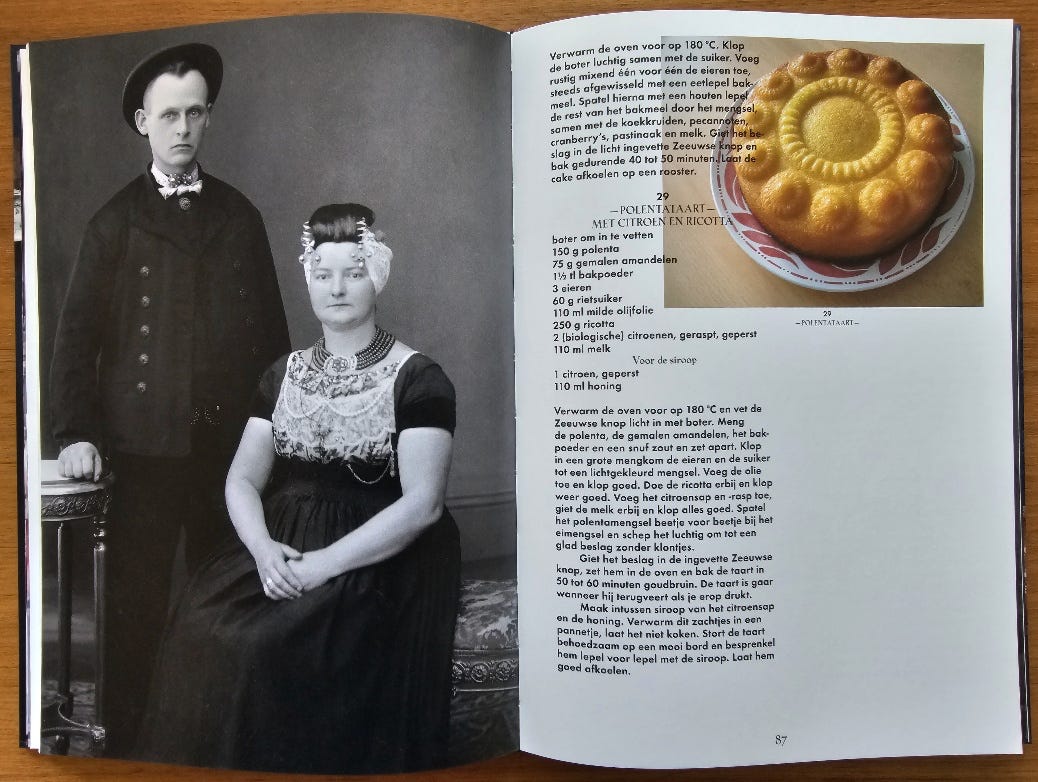
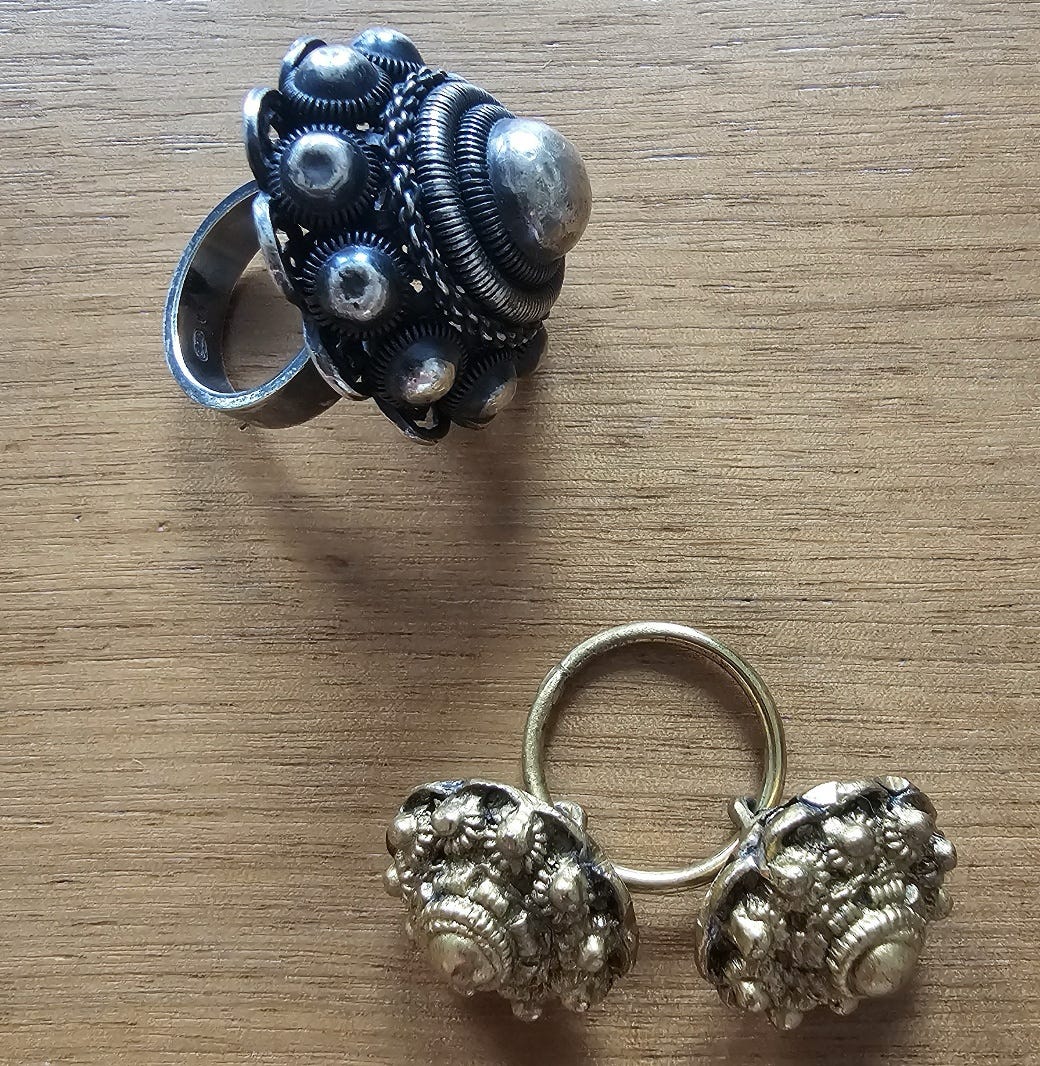
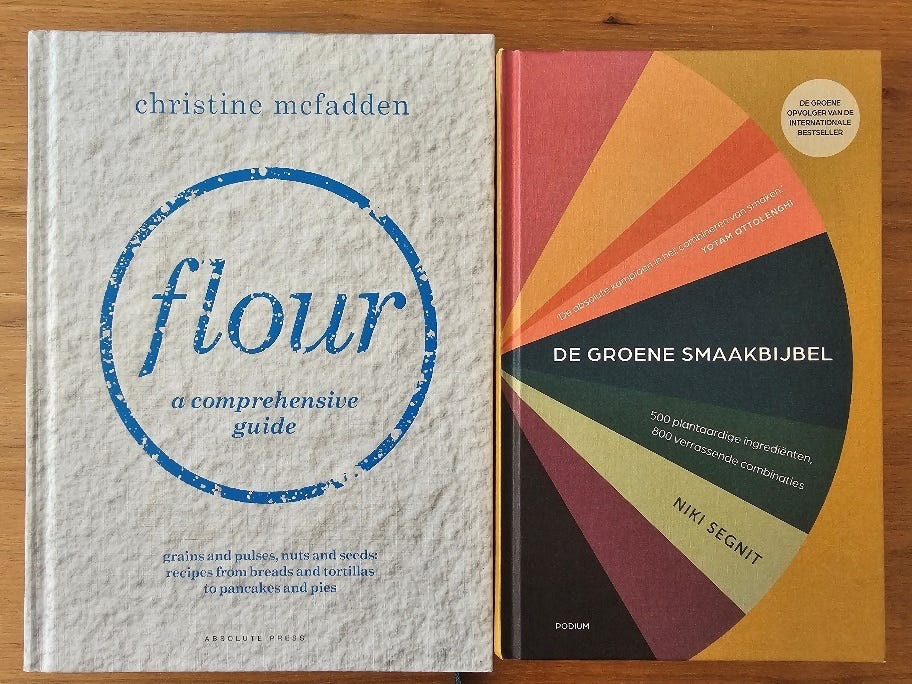
To be read again and again, and relished 💕📚💕
I'm at fault for relying on the internet or simply improving it...but, there is something magical about your stewardship of all this creativity